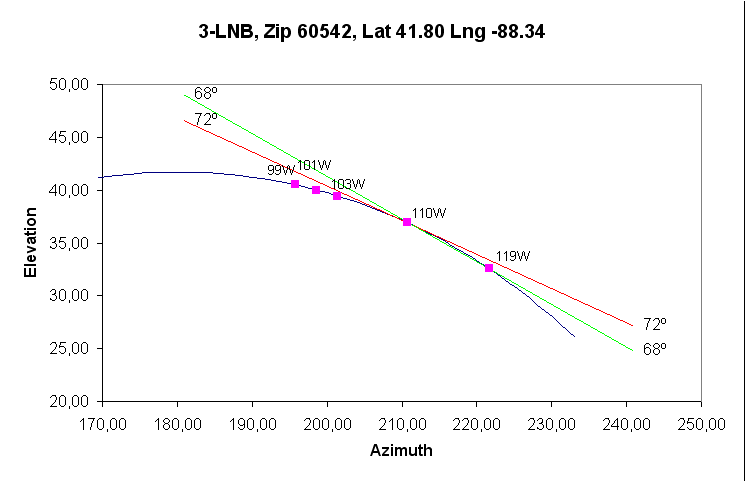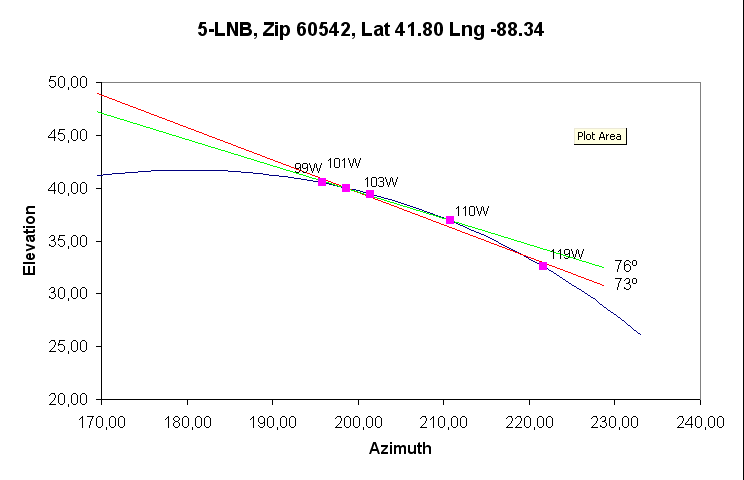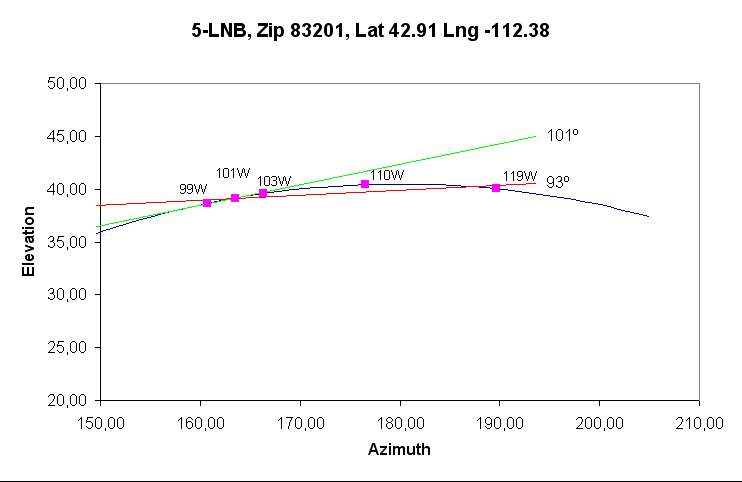Hi
Does anyone know why the tilt on a 5-LNB dish is different than the one on a 3-LNB dish? Looking at the satellite range (99-119) and (101-119) the tilt HAS to be roughly the same, or am I missing something? The fact that the 5-LNB centers on the 101 and the 3-LNB centers on the 110 shouldn't make a difference...
Many thanks
Alan
Does anyone know why the tilt on a 5-LNB dish is different than the one on a 3-LNB dish? Looking at the satellite range (99-119) and (101-119) the tilt HAS to be roughly the same, or am I missing something? The fact that the 5-LNB centers on the 101 and the 3-LNB centers on the 110 shouldn't make a difference...
Many thanks
Alan




